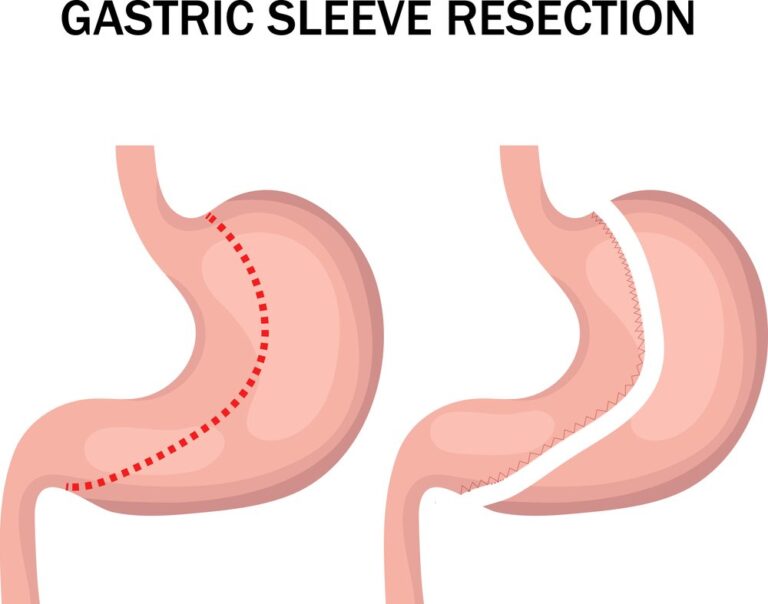
Weight loss surgery options 2023
Body weight is an insidious, ever-present, and pervasive concern in our culture. Humans who struggle with their weight are often unhappy with their appearance. Obesity can lead to many problems, from severe health consequences to a lower quality of life for the person struggling. Weight loss surgery is not new; however, we’re seeing more surgeons perform it less invasively than they did in the past.
Restrictive Surgeries
These surgeries involve changes to the small intestine designed to decrease the amount of food absorbed by the body. This procedure can take several forms, including removing a portion of the intestine or attaching a part of the intestine to an opening in your stomach.
– Gastric Banding
Gastric banding involves the placement of an inflatable silicone ring around the top portion of the stomach. The banding restricts the amount of food consumed at once and allows liquids to pass through freely. The band is tightened with a small inflatable pump and placed in a pocket skin of your abdomen.
– Gastric Sleeve
The Gastric Sleeve is a restrictive surgery that removes a large portion of the stomach. The procedure involves removing up to 85% of the stomach and creating a tubular shape for what remains. The goal is to restrict intake capacity, so patients do not feel hungry between meals. The shortened stomach will stretch over time, but the patient can eat smaller portions daily.
Malabsorptive Surgeries
Malabsorptive surgeries decrease the absorption of food by your body. The Roux-en-Y gastric bypass is the most widely known of these procedures, which involves attaching part of your small intestine to a portion of your stomach. This bypass decreases the amount of available nutrients in what you eat. It also eases the feeling of being full after eating, so patients can eat less and lose weight over time.
– Roux-en-Y gastric bypass
The Roux-en-Y gastric bypass is one of the most common forms of weight loss surgery today. A section of your small intestine called the jejunum connects to a portion of your stomach via an abdominal incision. About 85% of your small intestine is bypassed, preventing nutrient absorption. The goal is to cause a dramatic reduction in calorie intake and make it easier for patients to lose weight by making them feel full after each meal.
– Duodenal Switch Surgery
Duodenal Switch Surgery is an alternative to the Roux-en-Y gastric bypass. It does not quite as drastic a restriction as the bypass and does not create as much of a feeling of being full, but it creates less blocked nutrient absorption than the bypass. This procedure involves replacing a small portion of your small intestine with another piece from your stomach or colon. Approximately 90% of nutrients go through your intestines and cannot be absorbed by your body.
Combination Surgeries
Many weight loss surgeries are performed at the same time over several weeks. Combining two or more procedures allows surgeons to focus on different aspects of weight loss surgery at one time but still have that reduction in calorie intake from all of them. Both bariatric surgery and sleeve gastrectomy are performed with a laparoscopic approach to minimize post-operative complications and recovery time.
– Gastric Bypass + Lap Band
The Lap Band is a simple device placed around the stomach to create a small reservoir for your body to store excess nutrients. Patients who undergo a Gastric Bypass can reduce the size of their stomach by about 90% but may continue to struggle with their weight. The Lap Band is designed to work with the Gastric Bypass, helping patients lose weight after their bypass surgery.
– Continent Ileostomy + Gastric Sleeve
The Continent Ileostomy is a form of weight loss surgery that involves removing part of your small intestine and creating an opening in your stomach to reroute the remaining digestive system. This surgery is a less invasive alternative to the Gastric Sleeve, which requires an abdominal incision. The continent ileostomy allows you to lose weight even if you have a small or no section of intestines left. This procedure can be combined with the Gastric Sleeve to minimize weight loss time and complications.
– Banharn Urolithiasis
This surgery is beneficial if you suffer from complications that can arise from weight loss surgery. The Banharn procedure involves removing part of your bladder and creating an opening in the abdomen to route your urine. The opening will allow for a smaller portion of your stomach to be used for digestion but enables you to retain enough weight loss surgery benefits so that you do not develop kidney damage or other severe side effects.
Vagal Blockade, or vBloc
A vagal blockade is a surgical procedure involving blocking the nerves in your stomach responsible for inhibiting hunger sensations. A vagal nerve block targets the nerve fibers that inhibit nausea and vomiting. A vagal nerve block is performed by severing the neck of your spinal cord at the C5-6 junction.
Fast Recovery Options
Suppose you are interested in weight loss surgery but want to try something less invasive. In that case, you may choose a less restrictive procedure, such as laparoscopic adjustable gastric banding. These procedures do not require any significant incisions and should heal faster. Many patients undergoing these procedures have had no issues with scarring or back pain.
Easy Recovery Options
For quick recovery, you may opt for a less invasive bariatric procedure. These procedures do not require any significant incisions, and they heal faster. Many patients undergoing these procedures have had no issues with scarring or back pain. Simple bariatric procedures may provide a less drastic change in your body’s size than more comprehensive ones, but they are still effective for weight loss. These procedures can help you lose weight quickly, and they may be more comfortable for you than more extensive surgeries.
Extremely Successful Results
Weight loss surgery has a high success rate, with roughly 70% of patients experiencing significant results within seven months after the procedure is performed. This statistic is obtained by comparing post-operative weight to pre-operative weight and comparing patient satisfaction rates to non-patients.
The Future of Surgical Weight Loss
The future of weight loss surgery will involve using an implanted Port-A-Cath. A Port-A-Cath is a temporary catheter that can access your liver or other vital organs without requiring significant incisions. Currently, these catheters are only available to patients experiencing a medical emergency and need to be hooked up to an IV for long-term assistance.
Bariatric surgery is an excellent option for those who have tried other methods of weight loss and failed. Weight loss surgeries are available to almost anyone as long as they are healthy enough for the procedure and meet strict guidelines for obesity. Surgery has proven effective at helping people achieve long-term results in their weight management.





